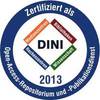Preview |
PDF, English
Download (16MB) | Terms of use |
Abstract
The Standard Model (SM) of particle physics stands as the most successful theory for describing the fundamental aspects of nature that experiments can access. Despite its numerous achievements, unresolved questions remain, necessitating the inclusion of physics beyond its current formulation. This thesis employs the functional renormalisation group, an advanced non-perturbative quantum field theoretical approach, to re-examine the SM and explore compelling, yet computationally demanding, extensions. The first part of this work studies the SM’s phase structure, reinterprets its unresolved puzzles, and explores its embedding along asymptotically safe quantum gravity. Altogether, this provides new insights into the features of the model and establishes a framework for testing non-perturbative new physics self-consistently. The second part focuses on popular SM extensions that inherently require a non-perturbative treatment. We present a cartographical study of strongly interacting gauge-fermion theories, dissecting the interplay between confinement and chiral symmetry breaking, which is essential for many new physics models. Additionally, we investigate how this class of theories behaves in extra dimensions and how fermion masses can arise in Composite Higgs models. This work lays the foundation for studying new physics from a non-perturbative perspective, providing insights into novel dynamics and unexplored directions that could illuminate a more fundamental description of nature.
| Document type: | Dissertation |
|---|---|
| Supervisor: | Goertz, Dr. Florian |
| Place of Publication: | Heidelberg |
| Date of thesis defense: | 22 April 2025 |
| Date Deposited: | 28 Apr 2025 10:47 |
| Date: | 2025 |
| Faculties / Institutes: | The Faculty of Physics and Astronomy > Institute for Theoretical Physics |
| DDC-classification: | 530 Physics |









